-
 Bitcoin
Bitcoin $115500
-1.78% -
 Ethereum
Ethereum $3642
2.83% -
 XRP
XRP $3.083
1.94% -
 Tether USDt
Tether USDt $1.000
-0.04% -
 BNB
BNB $762.7
2.02% -
 Solana
Solana $178.6
-1.50% -
 USDC
USDC $0.9999
-0.02% -
 Dogecoin
Dogecoin $0.2277
0.97% -
 TRON
TRON $0.3155
4.59% -
 Cardano
Cardano $0.7993
3.56% -
 Hyperliquid
Hyperliquid $42.47
1.55% -
 Stellar
Stellar $0.4169
2.55% -
 Sui
Sui $3.658
3.17% -
 Chainlink
Chainlink $17.56
1.21% -
 Bitcoin Cash
Bitcoin Cash $524.9
6.28% -
 Hedera
Hedera $0.2374
1.76% -
 Avalanche
Avalanche $23.19
1.45% -
 Litecoin
Litecoin $111.6
3.65% -
 UNUS SED LEO
UNUS SED LEO $8.966
-0.29% -
 Shiba Inu
Shiba Inu $0.00001337
1.95% -
 Toncoin
Toncoin $3.107
1.90% -
 Ethena USDe
Ethena USDe $1.001
-0.03% -
 Uniswap
Uniswap $10.05
2.93% -
 Polkadot
Polkadot $3.943
0.17% -
 Monero
Monero $327.4
5.22% -
 Dai
Dai $1.000
0.01% -
 Bitget Token
Bitget Token $4.429
-2.68% -
 Pepe
Pepe $0.00001207
0.46% -
 Aave
Aave $287.1
2.95% -
 Cronos
Cronos $0.1285
8.11%
How do mining machines connect to mining pools?
Mining machines connect to pools via a connection string (e.g., `stratum+tcp://pool.example.com:3333`), requiring a stable internet connection. Pool selection is crucial, considering fees, payout methods, and server location; troubleshooting involves checking the string, network settings, and software configurations.
Mar 02, 2025 at 04:01 pm
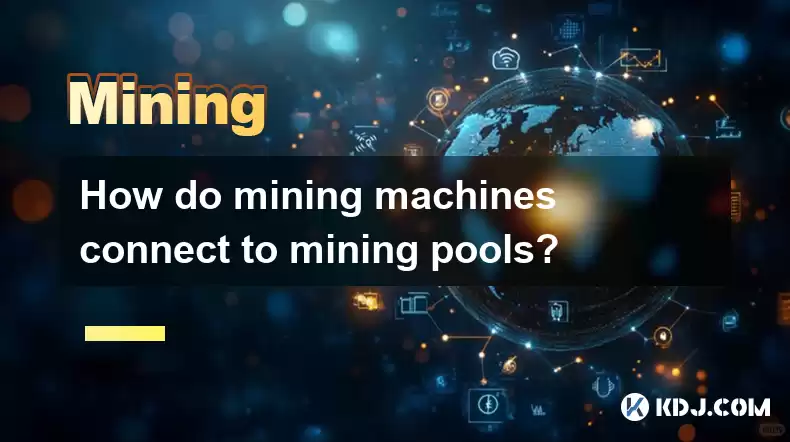
Key Points:
- Mining machines connect to mining pools via a connection string, typically containing the pool's address and port.
- Different mining software uses slightly different methods for inputting this connection string.
- Pool selection is crucial, considering factors like fees, payout methods, and server location.
- Network connectivity and stable internet are vital for successful pool connection and mining.
- Troubleshooting connection issues involves checking the connection string, network settings, firewall configurations, and mining software settings.
How Do Mining Machines Connect to Mining Pools?
Cryptocurrency mining, especially for coins utilizing Proof-of-Work (PoW) consensus, often involves joining a mining pool. This collaborative effort allows miners with varying computational power to combine their resources and share rewards more consistently. But how do these individual mining machines actually connect to these pools? The process involves configuring your mining software with the pool's connection details. This typically includes the pool's server address (IP address or domain name) and the port number used for communication.
The connection is established through a connection string, a specific piece of information unique to each mining pool. This string is usually entered directly into the mining software's configuration settings. The format of this string might slightly vary depending on the specific mining software you are using, such as CGMiner, Antminer, or others. Consult your software's documentation for precise instructions.
For instance, a typical connection string might look like this: stratum+tcp://pool.example.com:3333. Here, stratum+tcp specifies the communication protocol, pool.example.com is the pool's address, and 3333 is the port number. You'll need to replace this example with the actual details provided by your chosen mining pool. Incorrectly entering this information will prevent your mining machine from connecting.
Choosing the right mining pool is a crucial step. Different pools offer varying fee structures, payout methods (e.g., Pay Per Share (PPS), Pay Per Last N Shares (PPLNS), Full Pay Per Share (FPPS)), and server locations. A pool with servers closer to your geographical location will generally result in lower latency and better connection stability. Research different pools to find one that best suits your needs and mining hardware.
A stable internet connection is absolutely paramount. Mining involves constant communication between your machine and the pool. A poor or unstable internet connection will lead to dropped connections, reduced hashing power, and ultimately, lower earnings. Ensure you have a reliable and high-bandwidth internet connection dedicated to mining. Consider using a static IP address to avoid connection disruptions caused by dynamic IP changes.
If your mining machine fails to connect to the pool, troubleshooting is necessary. First, verify the accuracy of the connection string. A single typo can prevent a successful connection. Next, check your network settings and ensure your mining machine has access to the internet. Check your firewall settings; firewalls might be blocking the necessary ports for communication with the mining pool. Finally, review your mining software’s logs for error messages that may provide clues about the connection problem.
Different mining software packages often have their own user interfaces and configuration methods. Some might require you to input the connection string directly into a text field, while others might use a more graphical interface. Always refer to the specific instructions provided by your mining software's documentation. Failure to follow these instructions correctly will result in connection failure.
Beyond the basic connection string, some pools may require additional configuration options within your mining software. These options might include worker names (to identify your machine within the pool), passwords (for security purposes), and other settings specific to the pool's infrastructure. Always check the pool's website for detailed instructions and any specific requirements.
The connection process between your mining machine and the pool is ongoing. Your machine constantly sends its hash rate to the pool, and the pool in turn distributes mining tasks and rewards. This continuous communication is essential for participation in the mining process and for receiving your share of the block rewards. Interruptions in this communication will significantly impact your mining efficiency.
Frequently Asked Questions:
Q: What happens if my mining machine loses connection to the pool?
A: If your mining machine loses connection to the pool, it will stop contributing to the pool's hash rate and will not receive any rewards for the work done during the disconnection. The connection will need to be re-established for mining to resume.
Q: Can I connect one mining machine to multiple pools simultaneously?
A: No, a single mining machine generally cannot connect to multiple pools simultaneously. Each mining software instance is usually designed to connect to only one pool at a time.
Q: My mining software shows an error. What should I do?
A: Check your software's logs for error messages. These messages often pinpoint the cause of the problem, such as an incorrect connection string, network issues, or problems with the mining software itself. Refer to your mining software's documentation or seek support from the software developers or the mining pool's support team.
Q: What are the different types of mining pool payout methods?
A: Common payout methods include PPS (Pay Per Share), PPLNS (Pay Per Last N Shares), and FPPS (Full Pay Per Share). Each method has different risk and reward profiles for miners. Research each method to understand which best suits your needs.
Q: How do I choose the best mining pool for my needs?
A: Consider factors like pool fees, payout methods, server location (for lower latency), pool hash rate (pool size), and the pool's reputation and uptime. Research and compare different pools before making a decision.
Disclaimer:info@kdj.com
The information provided is not trading advice. kdj.com does not assume any responsibility for any investments made based on the information provided in this article. Cryptocurrencies are highly volatile and it is highly recommended that you invest with caution after thorough research!
If you believe that the content used on this website infringes your copyright, please contact us immediately (info@kdj.com) and we will delete it promptly.
- Bitcoin, Galaxy Digital, and Market Speculation: Decoding the Crypto Tea Leaves
- 2025-07-25 14:30:12
- Bitcoin ETFs: Fidelity, VanEck, and the Inflow Tidal Wave
- 2025-07-25 14:30:12
- XRP, Ripple, and Crypto: Riding the Wave in the Digital Asset Sea
- 2025-07-25 13:10:12
- Bitcoin, Crypto, and Ethereum: Navigating the New York Minute Market
- 2025-07-25 13:30:12
- SYRUP Listing, DeFi Lending, and Institutional Adoption: A New Era?
- 2025-07-25 13:30:12
- Binance Coin (BNB) Technical Breakout: Eyes on $1,200 Target
- 2025-07-25 13:35:12
Related knowledge
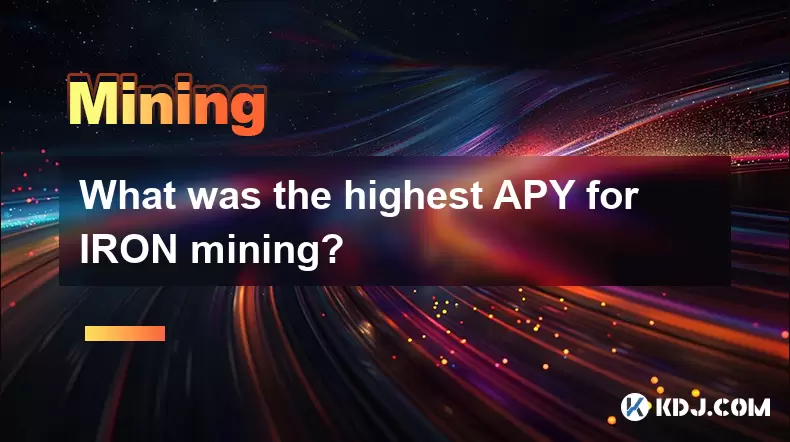
What was the highest APY for IRON mining?
Jul 23,2025 at 05:14am
Understanding IRON Token and Its Mining MechanismThe IRON token is a stablecoin that operates within the Iron Finance ecosystem, primarily on blockcha...

What is impermanent loss in IRON pools?
Jul 23,2025 at 09:00am
Understanding Impermanent Loss in the Context of IRON PoolsImpermanent loss is a phenomenon that affects liquidity providers in decentralized finance ...
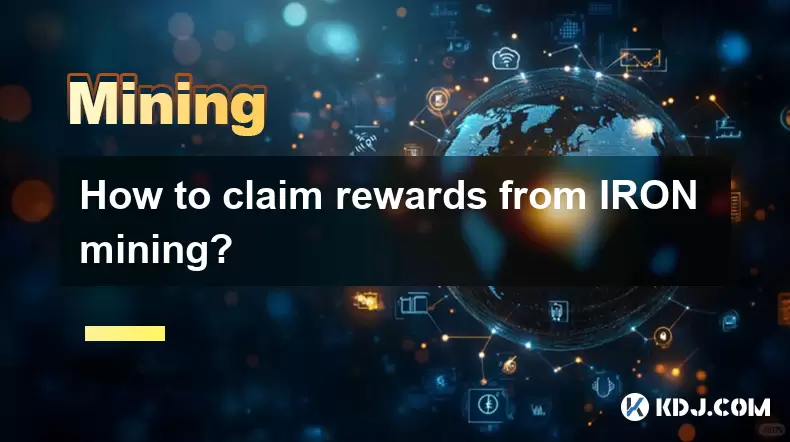
How to claim rewards from IRON mining?
Jul 23,2025 at 02:21pm
Understanding IRON Mining and Reward MechanismsIRON Finance operated as a decentralized finance (DeFi) protocol on the Polygon and Binance Smart Chain...
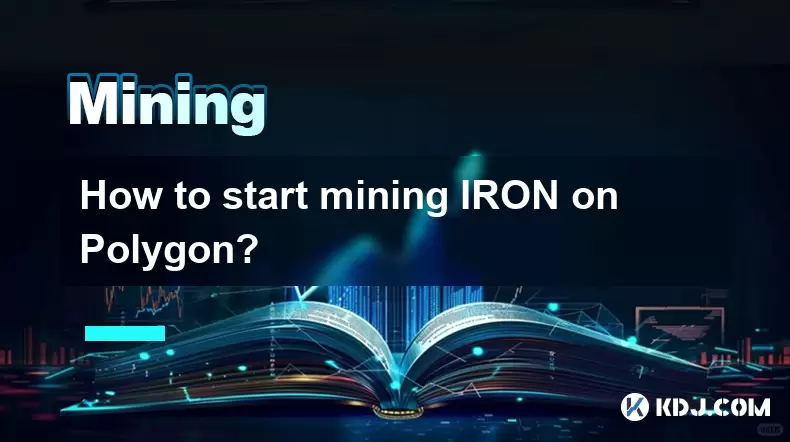
How to start mining IRON on Polygon?
Jul 23,2025 at 08:00pm
Understanding IRON and Its Role on PolygonIRON is a decentralized, algorithmic stablecoin designed to maintain a 1:1 peg with the US dollar. It operat...
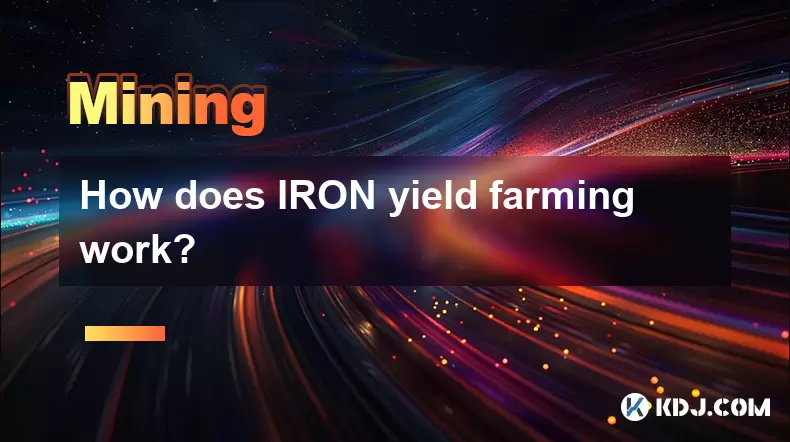
How does IRON yield farming work?
Jul 23,2025 at 10:14pm
Understanding IRON Yield Farming and Its Core MechanismIRON yield farming is a decentralized finance (DeFi) strategy that allows users to earn rewards...
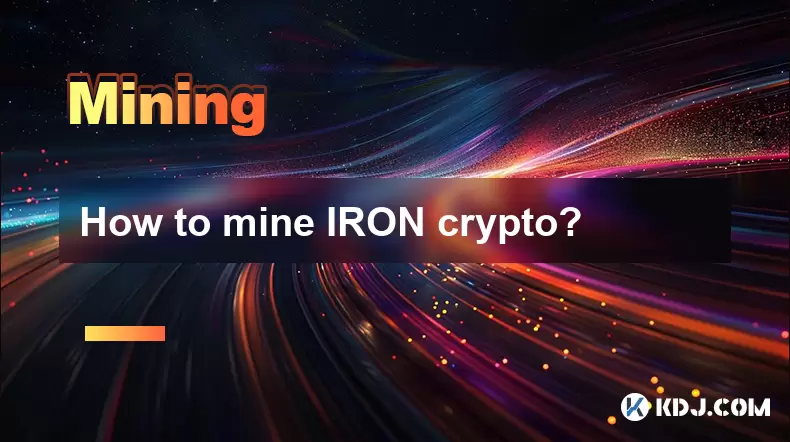
How to mine IRON crypto?
Jul 23,2025 at 07:08pm
Understanding IRON Crypto and Its Mining MechanismIRON crypto is not a standalone blockchain-based cryptocurrency that can be mined using traditional ...

What was the highest APY for IRON mining?
Jul 23,2025 at 05:14am
Understanding IRON Token and Its Mining MechanismThe IRON token is a stablecoin that operates within the Iron Finance ecosystem, primarily on blockcha...

What is impermanent loss in IRON pools?
Jul 23,2025 at 09:00am
Understanding Impermanent Loss in the Context of IRON PoolsImpermanent loss is a phenomenon that affects liquidity providers in decentralized finance ...

How to claim rewards from IRON mining?
Jul 23,2025 at 02:21pm
Understanding IRON Mining and Reward MechanismsIRON Finance operated as a decentralized finance (DeFi) protocol on the Polygon and Binance Smart Chain...

How to start mining IRON on Polygon?
Jul 23,2025 at 08:00pm
Understanding IRON and Its Role on PolygonIRON is a decentralized, algorithmic stablecoin designed to maintain a 1:1 peg with the US dollar. It operat...

How does IRON yield farming work?
Jul 23,2025 at 10:14pm
Understanding IRON Yield Farming and Its Core MechanismIRON yield farming is a decentralized finance (DeFi) strategy that allows users to earn rewards...

How to mine IRON crypto?
Jul 23,2025 at 07:08pm
Understanding IRON Crypto and Its Mining MechanismIRON crypto is not a standalone blockchain-based cryptocurrency that can be mined using traditional ...
See all articles

























































































